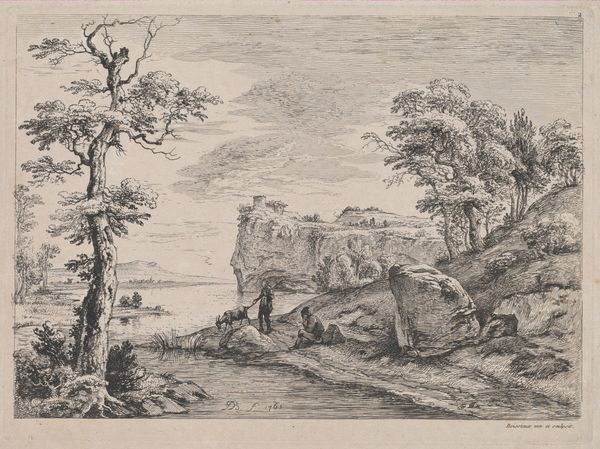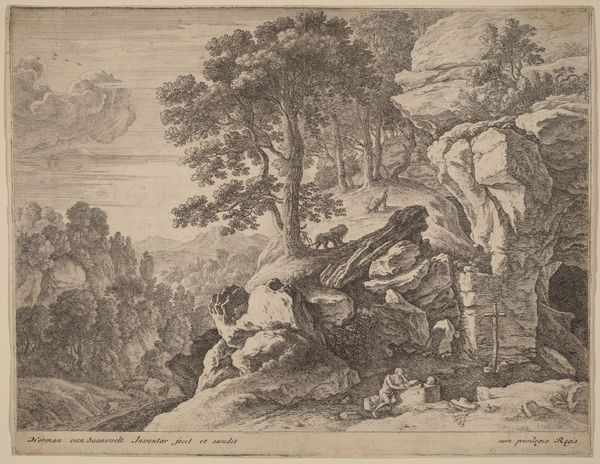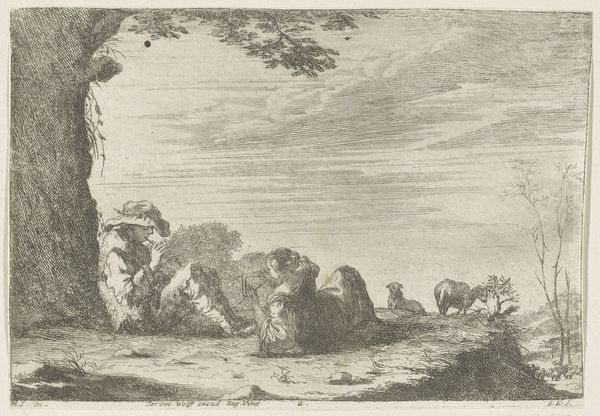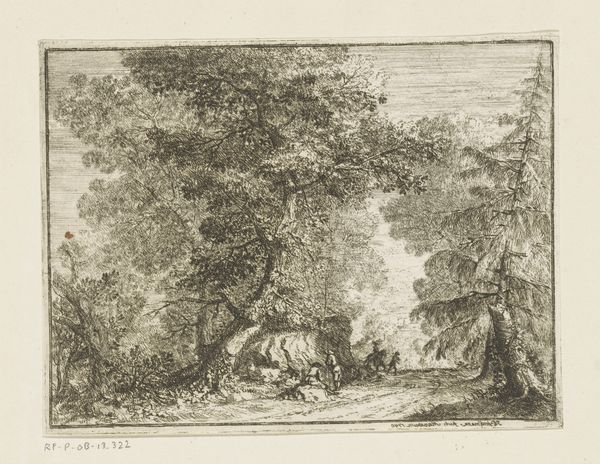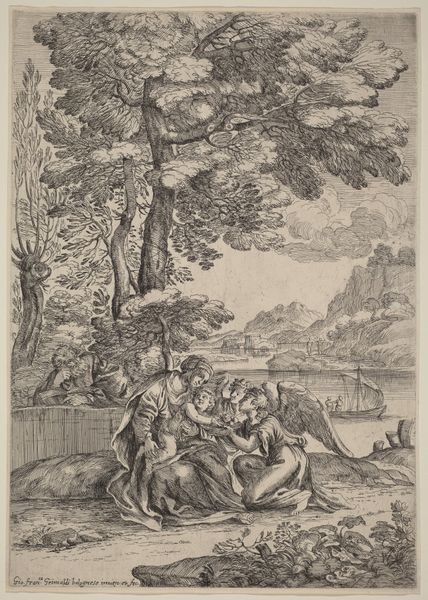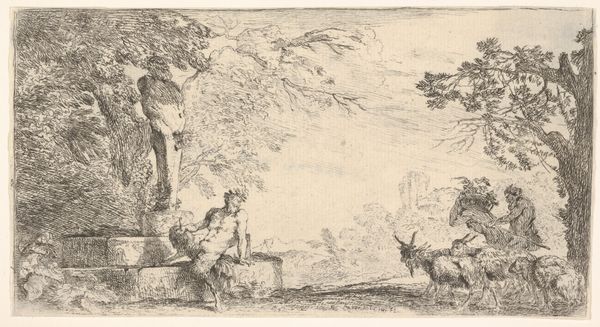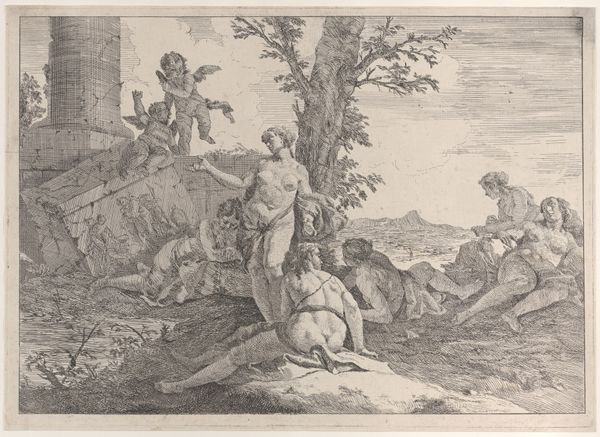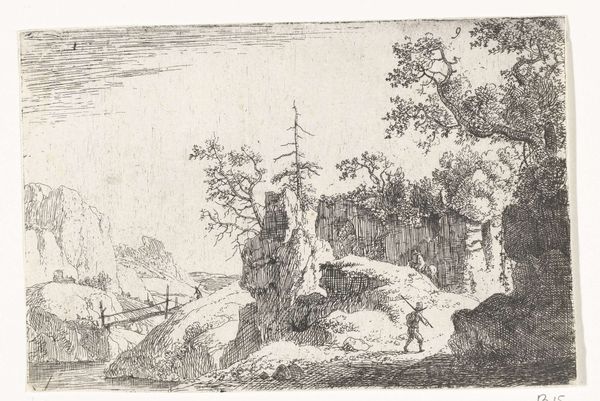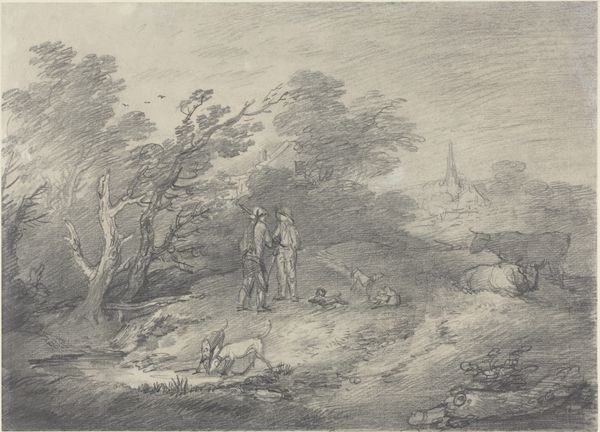
Woman and infant satyr in a landscape, the woman twisting to look over her left shoulder, a horned goat striding toward the background, from the series 'The Capricci' 1740 - 1742
0:00
0:00
drawing, print, etching
#
drawing
#
allegory
#
baroque
# print
#
etching
#
landscape
#
figuration
#
genre-painting
Dimensions: sheet: 6 7/8 x 8 1/8 in. (17.5 x 20.7 cm) plate: 5 9/16 x 6 3/4 in. (14.2 x 17.2 cm)
Copyright: Public Domain
Curator: Look at this evocative etching by Giovanni Battista Tiepolo, created between 1740 and 1742. It's titled "Woman and infant satyr in a landscape." Editor: There's an intriguing mood here – unsettled, almost. The rapid lines create a kind of restless energy. What draws you to it? Curator: As an etching, its creation involves the physical manipulation of a metal plate, layering acid to bite into the material. Each line is the result of a precise, deliberate action. How this repeatable matrix contrasts with such ethereal scenes intrigues me. Tiepolo likely outsourced the printing of these works from his studio, a detail offering potential insights into 18th-century print production. Editor: Absolutely, the labor and production angle are critical. But for me, it's the symbolism within that productive framework. We have this half-human mother and child, a satyr infant at that, set against what appears to be an indifferent landscape. What is the story about marginalized identities being told here? Are we looking at a commentary on the treatment of those deemed "other" by society? Curator: Or perhaps it reflects Tiepolo's exploration of the picturesque – blending the idyllic and the grotesque, reflecting shifting aesthetic tastes. The textures and tonal range he achieves with simple lines suggest an intense engagement with materiality. Notice how he coaxes subtle variations to construct depth in such a limited, manufactured space. Editor: That focus on texture is insightful. But can we ignore the context? Tiepolo was working during the Enlightenment, a time of burgeoning interest in classical mythology. His art provides access to a symbolic realm of the Classical past that also grapples with questions of reason and instinct. Curator: Agreed. The tension is in Tiepolo’s control of process, right? Reconciling a very physical printmaking practice and fantastic subjects; in effect, he's selling dreams wholesale. Editor: The image hints at complex, uneasy alliances and exposes fundamental questions around marginality and survival. And those all bubble to the surface precisely because the production seems “wholesale,” which feels incredibly appropriate. Curator: Well, it’s a fascinating reminder that even seemingly simple art objects are woven into intricate material, social, and imaginative frameworks. Editor: Indeed. Tiepolo has gifted us with an artwork rife with historical weight and continuing resonance for anyone reflecting on humanity today.
Comments
No comments
Be the first to comment and join the conversation on the ultimate creative platform.
